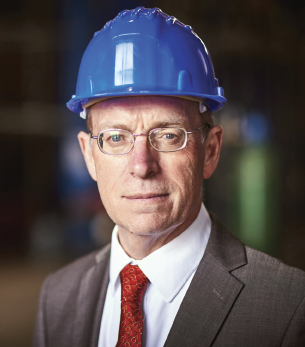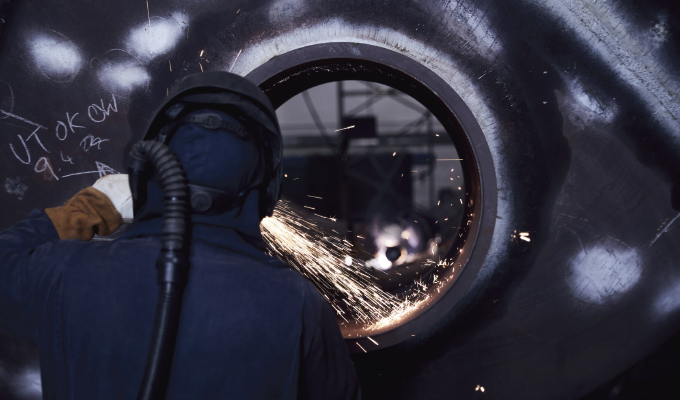What has an SME Tier 2 welding and pressure-vessel fabrication business in Mid Glamorgan got in common with the global behemoths of nuclear engineering: prestigious world-beaters like GE, Jacobs, and Balfour Beatty?
Quite a lot as it happens. Such is the rigor for safety, regulation, and quality in the United Kingdom’s civil nuclear industry, that a whole supply chain is being drawn into a process of business and engineering improvement that is proving beneficial for British engineers across myriad other industries. Going nuclear is good.
THE BENEFITS OF NUCLEAR ENGINEERING METHODOLOGY
The U.K. government has announced plans this year to build up to eight new nuclear reactors in the United Kingdom, aimed at improving the country’s energy independence and reducing greenhouse gas emissions, as well as creating thousands of new jobs.
At present, the only stations planned or under construction in the United Kingdom are EDF’s European Pressurized Water Reactors (EPR), at Hinkley and potentially Sizewell, with two reactors at each site. The commitment to the nuclear build program will, it is hoped, not only deliver the generating capacity required (if all the goals in the government’s strategy are met, nuclear could provide 20 to 25 percent of U.K. electricity needs by 2050) but bring significant economic benefits to the United Kingdom, including to the nuclear supply chain. Successful delivery will strengthen the perception of the U.K. supply chain, which will be important given that foreign competition is strong and U.K. firms will face a significant challenge from overseas companies vying for the same work. An expanded and more capable supply chain should be well positioned to access new home and export markets, and implicit in this is a focus on enhanced quality.
One could reasonably ask what all this has got to do with a medium-sized fabrication business in South Wales? Actually, in my experience, quite a lot because the transfer of knowledge and enhanced processes we have gained directly from experience of working in this ultra-safety-regulated and highly rigorous sector has undoubtedly impacted the quality of our delivery in other market sector applications. In our case that includes the water utility industry, chemicals manufacture and the oil and gas sectors. What is also clear is that we are not alone; our experience is being mirrored widely elsewhere across the nuclear Tier 2 and Tier 3 supply chain.
A TRACK RECORD OF SUCCESS
Vessco Engineering, accredited with the Fit for Nuclear Standard (F4N) in 2018 and a member of the Wales Nuclear Forum, specializes in the fabrication of pressure-vessels, heat exchangers, columns, and other similar mechanical structures. Over the past seven years the business has been able to build a strong track record in the nuclear sector, with a variety of commissions, from nuclear processing sites such as Sellafield and power generation sites like Hinkley Point C, through to experimental fusion facilities for STEP (Spherical Tokamak for Energy Production), and others, both in the United Kingdom and abroad.
Work recently commissioned includes an assignment to support Jacobs’ contribution to ITER in France. ITER (International Thermonuclear Experimental Reactor) is an international nuclear fusion research and engineering project aimed at creating energy by replicating, on Earth, the fusion processes of the Sun. Jacobs is responsible for coordinating the assembly of more than a million components in the ITER machine, including the first wall panels which protect the machine from plasma temperatures of up to 270,000,000 degrees Fahrenheit (150,000,000 degrees Celsius); the test blanket modules, which are an essential part of breeding tritium to fuel the fusion reaction in future reactors.
Our support to this extraordinary project involves manufacturing two large vacuum corrosion-monitoring vessels, each 5 feet in height, 5 feet in diameter and weighing up to 44 tons—design on these will be completed next year.
For obvious reasons, material-sourcing and provenance is vital in the manufacture of all pressure systems, but for the nuclear industry especially its importance in the manufacture of components is on a completely different scale. Materials’ cleanliness and welding perfection are prerequisites, but by far the most important factor demanded by principals and Tier 1 contractors in nuclear is safety—for workers and of course end-users.
PREPARING FOR WHAT’S TO COME
The Hinkley Point C project, which started in 2018, involves the fabrication of a series of enormous deaerators and feed water tanks, each weighing in at 363 tons. So large in fact that they will need to be shipped in sections and completed on site. These vessels alone have been a three-year labor of love, such is the tonnage and size of each vessel—exceeded in dimension only by the main reactor vessels themselves.
Each, once assembled and in place, must be able to withstand 20 bar pressure and temperatures ranging from ambient to 392 degrees Fahrenheit (200 degrees Celsius). Manufactured in three sections, the first of the two fully assembled 180-foot-long cylindrical pressure vessels will be completed in the first quarter of 2023, to be installed internally with four ferritic stainless steel deaerator units, and capped with crown and petal dished ends.
So, what is it about the realm of nuclear engineering which raises the game for our work in other sectors? Again, it starts and ends with safety. A culture of absolute perfection literally pervades the entire manufacturing process because, bluntly, the scale of potential harm due to error is incalculable. Everything therefore aligns with the regulatory expectations placed on the U.K. Nuclear Licensees and is shared throughout the nuclear supply chain to support quality improvements. These range from BS EN ISO 9001 and the existing codes and standards within the Nuclear Industry; Office for Nuclear Regulation’s (ONR) Technical Assessment Guides (TAGs), IAEA’s General Safety Guides (GSG), and a host of others.
BRINGING IT ALL TOGETHER
At a practical level this has meant the intensity and precision of the documentation is much greater than we had anticipated, and that in no way underestimates the quality systems with which we were already familiar in our work in, say, the oil and gas sector, which has its own inherent risks to manage.
Nonetheless, and in terms of on-site production processes, the level of scrutiny is also a lot higher than we had been used to. All of this, of course, impacts on time and cost, which is undoubtedly one of the key learnings we have taken away when it comes to estimating new projects. In fact, so much investment of time and planning and trialing has been necessary in the fabrication of the first HPC vessel that cost-recovery and margin won’t come through until the closing phases of the second 363-ton structure.
Through this iterative process we have learnt how to weld the superstructures better, how to manufacture the dished heads in a different way, how to speed up the fitting and welding of the nozzles, and so on. We have also determined how best we can run different parts of the structure in parallel, rather than do everything in one long sequence, although given the limited working space within and around some parts of the vessel structures, there’s only so many pairs of hands that safely can be useful at any one time. We have none of the space advantages that one might have, for example, in building an aircraft carrier. The vessel in making has to be rotated in place so we can have the necessary working space to access all of the necessary surfaces, externally and internally. Thereafter, we can manufacture the internals, concurrently with the main vessel, including the saddles, bringing all of the various elements together at the end.
A BRIGHT FUTURE
Looking ahead, the time taken earlier for the initial designs, development, and procedural documentation can safely be cut back dramatically. In fact, the whole production cycle should be reducible by up to two-thirds of the original cycle, allowing the procedures to be performed in a more time efficient manner. Going forward, this will enable us to manufacture more cost-effectively.
All these are valuable learnings which can feed back into the nuclear realm for other manufacturers facing similar challenges, and has led to us using those learnings to provide consultancy services, supplying clients with experiential data on the length of time it takes to manufacture specific structures and components, all of which will be useful across the supply chain. Importantly, however, it can also add value in other market applications and, in our case, some of these have informed work completed, for example, in the design and manufacture of heat exchangers for the chemicals industry, and the same applies for work we will be commencing shortly for a major water treatment center in the Midlands.
Interestingly, one of the downsides of the nuclear sector’s rigor is the pace and resistance to incorporate potential learnings from other industries. For example, synergic MIG welding techniques are superbly suited for delivering neat fabrication quickly, but this is not yet approved for use in civil nuclear. In due course, for the right applications that may come. In the meantime, there’s good reason why most of the traffic of learning is one-way.
Learning how to prepare for inspection and test plans and incorporating these well in advance in the organization of workflow, provisioning for the right welding procedures for each application, building up a library of procedures and techniques for future use, all feed into a compendium of best practice aimed at reducing time and improving quality. Reiterative documented learning in this way eventually reduces forty days of process down to fifteen while improving the quality, and above all the safety, of the end product.

ABOUT THE AUTHOR
Julian Vance-Daniel is director of Vessco Engineering in Bridgend, part of the LTi Metaltech group. Vessco Engineering was founded in 2006 to support local industries in and around South Wales with general fabrication work and the fabrication of air cooler header boxes. Its first vessels were small, relatively low-pressure filter-type units. LTi Metaltech has earned the trust of many world-leading organizations in a variety of technical sectors over the years. For more information, visit www.vesscoengineering.co.uk.
MODERN PUMPING TODAY, December 2022
Did you enjoy this article?
Subscribe to the FREE Digital Edition of Modern Pumping Today Magazine!


